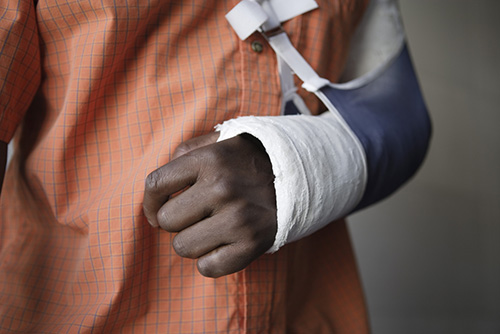Cast Care Tips
- Increased pain and the feeling that the splint or cast is too tight
- Numbness and tingling in your hand or foot
- Burning and stinging
- Excessive swelling below the cast
- Loss of active movement of fingers or toes

When it comes to taking care of your cast or splint, there are a few important aspects to keep in mind. Here’s a few of the more general guidelines to get you on the road to successful cast care:
- Keep it dry! Moisture weakens plaster and damp padding can cause irritation (plus, it smells!). Whenever you’re around water (like in the shower or bath) use several layers of plastic to protect the cast, or purchase a waterproof shield to keep everything nice and dry.
- Keep it clean! Do your best to keep dirt, sand, etc. away from the inside of your splint or cast.
- Don’t pull the padding! Do not pull out the padding from your splint or cast – it’s there for a reason.
- Itching! Itching! As tempting as it may be, DO NOT stick objects (like coat hangers) down inside your cast. Also, don’t apply powders or deodorants to itching skin.
- No cutting allowed! Do not break off rough edges – or trim – your cast.
- Inspect, inspect, inspect! Inspect the skin around the cast. If you notice any redness or raw looking skin around the cast, make sure to give us a call. ALSO…make sure to inspect the cast itself – if you should notice any cracks or soft spots, make sure to notify the office.
Another thing to never do yourself (no matter how tempting it may be) is removing the cast. DIY cast removal often results in skin damage or, worse, prevents the appropriate healing of your injury. In short…make sure to use common sense. You have a serious injury and you must protect your cast from damage so it can protect your injury while it heals. When it’s time for the cast to come off your doctor will use a special cast saw to remove it. The saw vibrates and can be loud, but won’t hurt you.
After the initial swelling has subsided, proper splint or cast support will usually allow you to continue your daily activities with a minimum of inconvenience. Our providers, nurses, and physical therapists will work with you to help you achieve maximum results!

